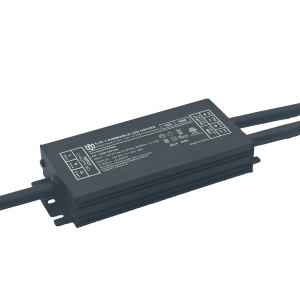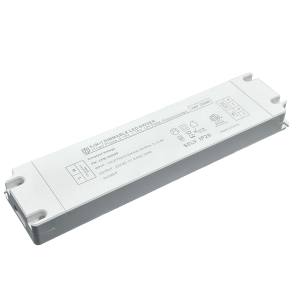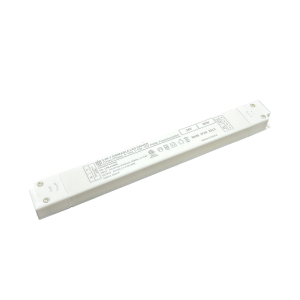Triac Drive Technology Demystified: The Secret Weapon for Achieving Smooth, Stepless Dimming
What Makes Triac Drive Technology Revolutionary?
At its core lies an ingenious semiconductor device called a "TRIAC" (Triode for Alternating Current), engineered to act as a bidirectional switch in AC circuits. Unlike traditional mechanical rheostats or PWM controllers, triac-based systems chop sine waves dynamically across all phases—enabling unprecedented precision in light intensity adjustment. This phase angle control method delays voltage application during each half-cycle, effectively reducing RMS values without compromising waveform integrity. Modern variants integrate zero-crossing detection algorithms to suppress audible noise and electromagnetic interference (EMI), making them ideal for residential settings where quiet operation matters most.
How Does It Deliver Truly Seamless Stepless Dimming?
Conventional dimmers suffer from discrete steps due to fixed resistor ladders or coarse digital resolution. Triac drivers shatter these limitations through continuous conduction angle modulation. When paired with microcontroller units (MCUs), they achieve sub-percentile incremental changes—imagine transitioning from dawn simulation (5%) to vibrant task lighting (95%) with imperceptible gradients. Advanced models employ adaptive feedback loops that compensate for load variations (like temperature-induced resistance shifts in filament bulbs), maintaining consistent perceived brightness regardless of environmental factors. For LED fixtures specifically, compatibility protocols ensure flicker-free performance even at ultralow levels below 1% duty cycle.
Why Is It Considered the "Secret Weapon" in Premium Installations?
Professionals prize triac solutions for three game-changing advantages: First, universal appliance compatibility—they work equally well with halogen downlights, CFL retrofits, and high-bay industrial LED arrays. Second, thermal management superiority; solid-state construction eliminates arcing common in relay-based systems, extending lifespan beyond 100k cycles. Third, network integration potential—KNX/DALI protocol support allows centralized control across multi-zone architectures via Crestron or Control4 platforms. Case studies show luxury hotels using triac backbone networks to sync ambient lighting with curtain automation systems, creating immersive guest experiences without visible hardware clutter.
Real-World Applications That Showcase Its Prowess
Consider museum curation: Sensitive artwork requires precise CRI>90 illumination adjustable in 0.1% increments to prevent UV damage. Or architectural projects demanding circadian rhythm alignment—triac controllers smoothly shift Kelvin temperatures from warm 2700K morning glow to cool 5000K afternoon mimicry. Even emergency exit signage benefits; fail-safe designs maintain minimum brightness during power fluctuations while allowing full output restoration instantly upon detecting grid stabilization. Hospital operating theaters leverage isolated gate drivers preventing accidental contact shocks during surgical procedures—a safety feature unattainable with older technologies.
Overcoming Common Misconceptions About Triac Systems
Myth #1: They generate harmful harmonics. Reality Check: Class D filtered designs meet IEC61000-3-2 standards when configured properly. Myth #2: Limited scalability. Counterpoint: Paralleling multiple modules handles loads up to 15kW per channel. Myth #3: High cost barrier. Bulk procurement brings per-unit prices comparable to basic trailing-edge dimmers when factoring longevity benefits. Most critically, DIY enthusiasts often misdiagnose buzzing issues as device failure—when actually improper wiring length exceeding manufacturer specs causes parasitic oscillations fixable via ferrite core chokes.

Future Trends Shaping Next-Generation Triac Innovations
Emerging R&D focuses on gallium nitride (GaN) substrate adoption for lower ON-resistance losses, enabling cooler operation at higher current densities. Machine learning algorithms now predict optimal firing angles based on historical usage patterns, self-optimizing energy savings over time. Wireless charging integration transforms table lamps into dual-purpose devices charging smartphones while providing ambient light. Most exciting is biophilic design convergence—solar harvesting skins embedded with triac regulators could soon power self-sufficient streetlights harvesting ambient vibration energy through piezoelectric materials. As smart grid initiatives accelerate globally, these adaptive load managers will become foundational infrastructure components bridging renewable generation with intelligent consumption patterns.
 A New Benchmark in Energy Sav
A New Benchmark in Energy Sav
 The Future Outlook for Triac
The Future Outlook for Triac
 The Application Advantages of
The Application Advantages of
 Innovative Design + Outstandi
Innovative Design + Outstandi
